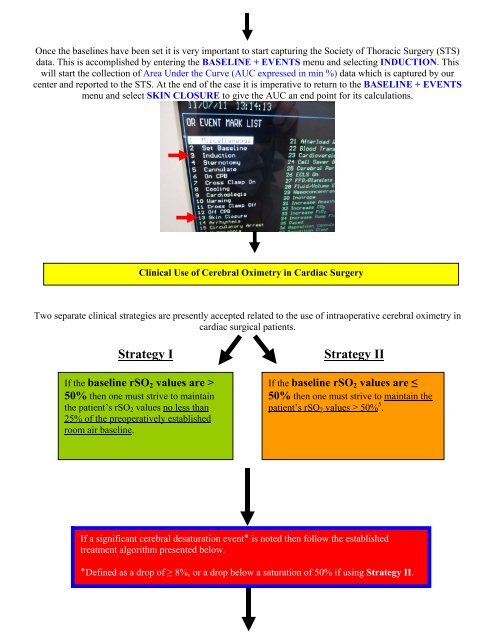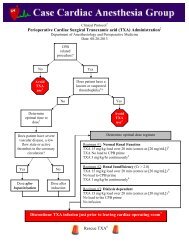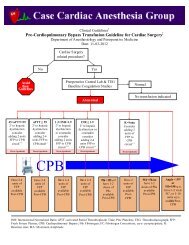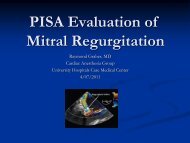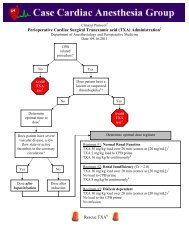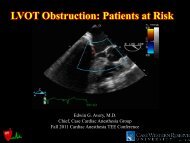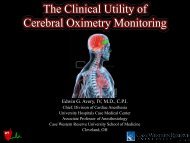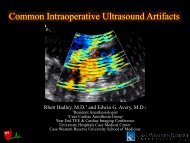Cerebral Oximetry Monitoring Clinical Protocol - Casecag.com
Cerebral Oximetry Monitoring Clinical Protocol - Casecag.com
Cerebral Oximetry Monitoring Clinical Protocol - Casecag.com
You also want an ePaper? Increase the reach of your titles
YUMPU automatically turns print PDFs into web optimized ePapers that Google loves.
Once the baselines have been set it is very important to start capturing the Society of Thoracic Surgery (STS)data. This is ac<strong>com</strong>plished by entering the BASELINE + EVENTS menu and selecting INDUCTION. Thiswill start the collection of Area Under the Curve (AUC expressed in min %) data which is captured by ourcenter and reported to the STS. At the end of the case it is imperative to return to the BASELINE + EVENTSmenu and select SKIN CLOSURE to give the AUC an end point for its calculations.<strong>Clinical</strong> Use of <strong>Cerebral</strong> <strong>Oximetry</strong> in Cardiac SurgeryTwo separate clinical strategies are presently accepted related to the use of intraoperative cerebral oximetry incardiac surgical patients.Strategy IIf the baseline rSO 2 values are >50% then one must strive to maintainthe patient’s rSO 2 values no less than25% of the preoperatively establishedroom air baseline.Strategy IIIf the baseline rSO 2 values are ≤50% then one must strive to maintain thepatient’s rSO 2 values ≥ 50% 5 .If a significant cerebral desaturation ٭event is noted then follow the establishedtreatment algorithm presented below.II. Defined٭ as a drop of ≥ 8%, or a drop below a saturation of 50% if using Strategy


